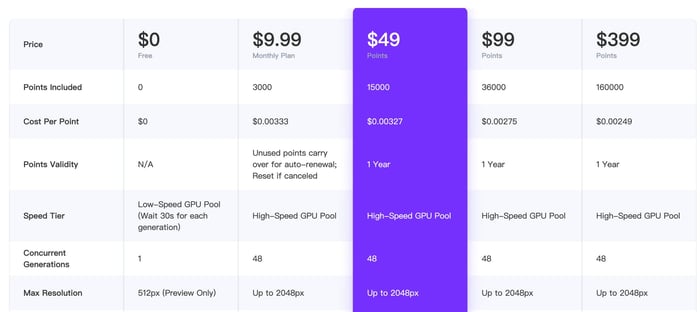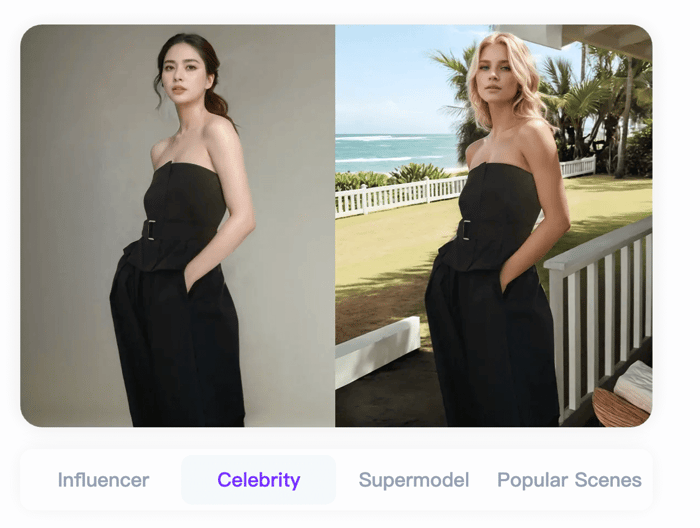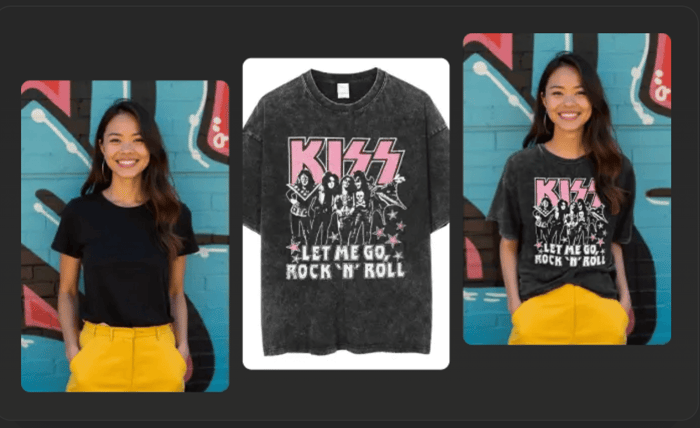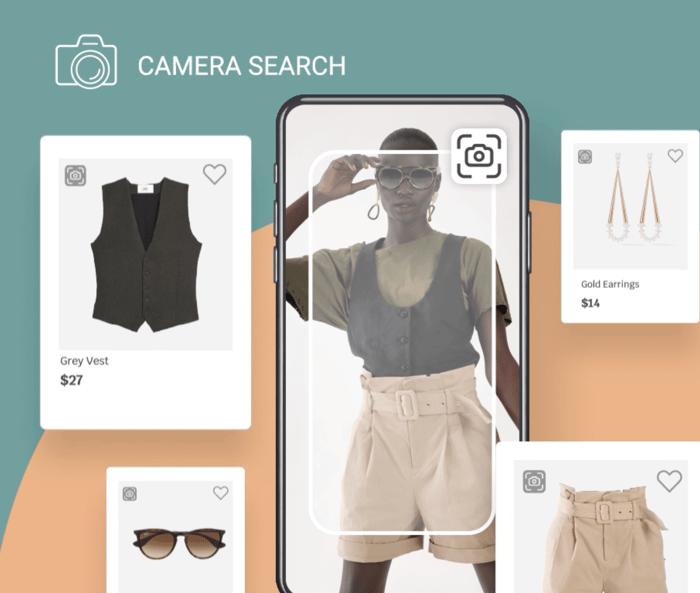Best 8 Weshop.ai Alternatives to Power Fashion Retail in 2025
Table of Contents
- What is Weshop.ai?
- Weshop.ai Pricing
- Why Look for a Weshop.ai Alternative?
- Comparative table of Weshop.ai's main competitors
- Top 8 Weshop.ai Alternatives to Explore in 2025
- 1. Modelia - Best for Custom Styling + Global Content
- 2. Fashn.ai - Best for Fast, Scalable Visual Tagging
- 3. Lily AI - Best for Personalization and Buyer Intent
- 4. Vue.ai - Most Comprehensive AI Fashion Suite
- 5. Edited - Best for Market Intelligence and Trend Data
- 6. FindMine - Best for AI Styling and Outfitting
- 7. Syte - Best for Visual Search and Discovery
- 8. Pixyle.ai - Best for Custom Taxonomies and Localization
- Ready to Explore Weshop.ai Alternatives?
- FAQ: Weshop.ai alternatives
Weshop.ai has gained attention for helping fashion retailers turn product data into shoppable, social-ready content. But as fashion tech advances and brand needs diversify, many companies are now exploring Weshop.ai alternatives that offer deeper personalization, better creative control, multilingual support, or stronger integration across channels.
Whether you're scaling a DTC brand, targeting global audiences, or seeking more influence over the styling and storytelling behind your products, this guide is for you.
We’ve handpicked 8 top Weshop.ai competitors to consider in 2025, each bringing a unique advantage in creating, enriching, and distributing AI fashion content at scale.
What is Weshop.ai?
Weshop.ai is a fashion content automation platform that uses AI to generate lifestyle visuals, product descriptions, and promotional assets tailored for online commerce and social media.
Its core feature is turning raw product data (such as flat lay images, SKUs, and descriptions) into high-quality visual content with AI-generated human models. This allows brands to create product pages, social posts, and promotional visuals without organizing photo shoots or depending on large creative teams.
Weshop.ai's tools typically include:
AI model visuals using uploaded product images
Auto-styling for outfit suggestions or lookbooks
Channel-ready assets for e-commerce, Instagram, and ads
Automated content updates when products change

Weshop.ai Pricing
Weshop.ai does not publish its pricing online, as costs are tailored based on client scale and implementation complexity. However, most pricing conversations include the following variables:
Number of SKUs processed monthly
Image complexity: Does the client want simple background replacement or full model generation?
Volume of assets: How many images, banners, or videos are needed per SKU?
API access and integration: Is the tool integrated into a custom CMS or pipeline?
Support and onboarding: Dedicated support, training, and customization affect pricing tiers
Retailers typically need to schedule a demo and consultation to receive a tailored quote. Some enterprise clients report five-figure annual pricing depending on scale.

Why Look for a Weshop.ai Alternative?
While Weshop.ai offers powerful automation, it might not suit every brand’s creative or operational goals. Here are the most common reasons why brands explore other options:
1. Limited Styling Control
Weshop.ai offers strong automation, but for some brands, it feels too templated. If you want to define how your garments appear (fit, pose, aesthetic, color grading), you may need a platform with deeper customization options.
2. Lack of Buyer Intent Metadata
Weshop.ai focuses on visual output but doesn’t dive deep into behavioral or emotional tagging, i.e., tagging garments with buyer moods like "elegant," "sporty," or "youthful." Brands wanting more personalized recommendations often turn to competitors like Lily AI.
3. Weak Localization
For fashion retailers working across LATAM, Europe, or Asia, producing content in the buyer’s native language is critical. Weshop.ai’s strength is in visuals—but its text generation and metadata enrichment often lag in regional nuance.
4. No Built-in Trend Layer
Some platforms like Edited or Modelia offer trend signals or benchmarks against competitors. If you need trend forecasting or industry data built into your workflow, you may need to combine Weshop with other tools—or switch entirely.
5. Lack of Frontend Discovery Features
If you’re looking to enhance product discovery through visual search, shop-the-look, or outfit builders, platforms like Syte offer capabilities beyond Weshop.ai’s scope.

Comparative table of Weshop.ai's main competitors
Platform | Personalization | Shoppable Content | Visual Discovery | Multilingual Support | DTC-Friendly | Market Intelligence |
|---|---|---|---|---|---|---|
Modelia | ✅ Advanced psychographic tagging | ✅ AI model images | ✅ Visual search-ready | ✅ Multilingual capabilities | ✅ Built for DTC & global brands | ❌ External tools needed |
Syte | ✅ Product discovery based on behavior | ✅ Smart outfit suggestions | ✅ Visual similarity engine | ✅ Available in multiple languages | ✅ Yes | ❌ Not focused on market analytics |
Vue.ai | ✅ Deep personalization features | ✅ AI outfit builder & PDP content | ✅ Visual tagging & discovery | ✅ Global language support | ✅ Yes | ✅ Trend + product insights |
Lily AI | ✅ Emotional and intent-based tagging | ✅ Enhanced PDP content | ❌ No visual similarity engine | ✅ Good support for multilingual | ✅ Yes | ✅ Consumer behavior trends |
FindMine | ✅ Style-based personalization | ✅ Shoppable "complete the look" | ❌ Not a core feature | ❌ Primarily English | ✅ Great for DTC retail | ❌ No trend insights |
Pixyle.ai | ✅ Custom taxonomy for tagging | ❌ Focuses on enrichment, not content | ✅ Visual tagging and matching | ✅ Excellent localization | ✅ Especially for global brands | ❌ No built-in intelligence |
Fashn.ai | ❌ Limited personalization | ❌ No shoppable content generation | ✅ Fast image-based tagging | ❌ Weak outside English | ❌ Better for B2B cataloging | ❌ No market data |
Edited | ❌ Not a tagging tool | ❌ No content generation | ❌ Not focused on visuals | ✅ Global retailer coverage | ✅ Insights for DTC strategy | ✅ Strong market/trend analytics |
Top 8 Weshop.ai Alternatives to Explore in 2025
1. Modelia - Best for Custom Styling + Global Content
What it does well
Modelia allows retailers to fully customize AI model visuals and enrich product data with emotional and regional tags. Brands can upload flat images, generate diverse models wearing their garments, and define how items are labeled across languages and markets.
AI model photos with styling control
Custom taxonomies and brand vocabulary
Image to video generator
Best for
Brands with strong creative identity or international ambitions.
Sign up and discover one of the best Weshop.ai alternatives
2. Fashn.ai - Best for Fast, Scalable Visual Tagging
What it does well
Fashn.ai quickly processes thousands of SKUs using pre-trained models. It’s ideal for standardizing large catalogs with attribute labels like neckline, sleeve type, pattern, etc.
Where it falls short
Less focused on brand voice, emotion, or storytelling.
Best for
Operations teams and large catalogs needing fast taxonomy cleanup.

3. Lily AI - Best for Personalization and Buyer Intent
What it does well
Lily AI focuses on psychographic and emotional enrichment. It maps product features to how shoppers feel or identify themselves, increasing conversion and relevance.
Where it falls short
No visual content generation; must pair with an image platform.
Best for
Retailers seeking deep personalization in PDPs and recommendations.

4. Vue.ai - Most Comprehensive AI Fashion Suite
What it does well
Vue.ai combines content automation with recommendations, AI styling, tagging, and virtual models. It’s a strong all-in-one solution.
Where it falls short
May feel heavy for small teams; configuration can take time.
Best for
Enterprise retailers with full tech stacks and omnichannel reach.
5. Edited - Best for Market Intelligence and Trend Data
What it does well
Edited tracks global pricing, product launches, and trend signals across competitors. It helps merchandisers and buyers make data-backed decisions.
Where it falls short
Not a creative tool, used more for insights than output.
Best for
Fashion planning, trend forecasting, and competitive analysis.

6. FindMine - Best for AI Styling and Outfitting
What it does well
FindMine automates outfit generation for e-commerce, PDPs, and email. It expands storytelling around each product and helps boost cart size.
Where it falls short
Focuses on styling rather than visual generation or tagging.
Best for
Retailers using style content to increase conversion.

7. Syte - Best for Visual Search and Discovery
What it does well
Syte enables shoppers to search by uploading photos, browse similar styles, and explore shoppable inspiration galleries.
Where it falls short
Not a backend enrichment platform, best used for frontend UX.
Best for
Retailers investing in guided shopping and visual discovery.

8. Pixyle.ai - Best for Custom Taxonomies and Localization
What it does well
Pixyle offers highly configurable tagging pipelines and multilingual metadata generation, supporting internationalization.
Where it falls short
Doesn’t provide visuals or deep styling tools.
Best for
Brands operating in multiple countries or markets.
Ready to Explore Weshop.ai Alternatives?
If you're ready to go beyond templates and unlock deeper creative potential, now is the time to explore new Weshop.ai alternatives.
Evaluate what your brand truly needs: Is it creative control over visuals? Multilingual content for cross-border growth? More emotionally resonant tagging for personalization?
Each of the platforms on this list brings a unique strength (from global content creation to AI styling, visual discovery, or trend insights. And most of them offer free trials or pilot programs) so you can test what fits your workflow before you commit.
2025 is shaping up to be a transformative year for retail content. Don’t just keep up, get ahead.
Click here to discover more about Modelia!!
FAQ: Weshop.ai alternatives
What are the best alternatives to Weshop.ai for fashion e-commerce?
Some top alternatives include Modelia, Vmake.ai, Flair AI, Photo AI, ProductAI, and VModel AI, each offering features like AI-generated models, realistic poses, and customizable outfits.
How do Weshop.ai alternatives differ from each other?
They differ in focus areas: Modelia specializes in custom styling and global content, Flair AI offers dynamic pose generation, Photo AI focuses on realistic human models, and ProductAI provides professional commercial photography.
Can these alternatives improve online product presentations?
Yes, these platforms help create high-quality, photorealistic visuals, allowing fashion brands to showcase products more attractively, enhancing engagement and conversion rates.
Are Weshop.ai alternatives easy to integrate with e-commerce stores?
Most alternatives offer simple integration options, either through web platforms or apps, making it easy to generate AI models and images directly for online stores and marketing campaigns.
How would you rate this article:
Related Articles
- Top fashion brands leveraging artificial intelligence in 2025
- How AI Video Generators Can Revolutionize Your Marketing Strategy
- How Digital Clothing Is Shaping the Future of Fashion
- How to Use an Outfit Visualizer for Fashion Inspiration
- AI Photo Restoration: Revive Old Photos with Cutting-Edge Artificial Intelligence Technology
- Virtual Clothing Models: The Future of Fashion Design and Online Shopping
- The Rise of AI-Generated Shoes in Modern Design
- 3D Fashion Design: Revolutionizing Fashion with Cutting-Edge Technology
- 7 Best fashion AI tools for designers
- Essential Flat Lay Photography Tips for Perfect Shots
